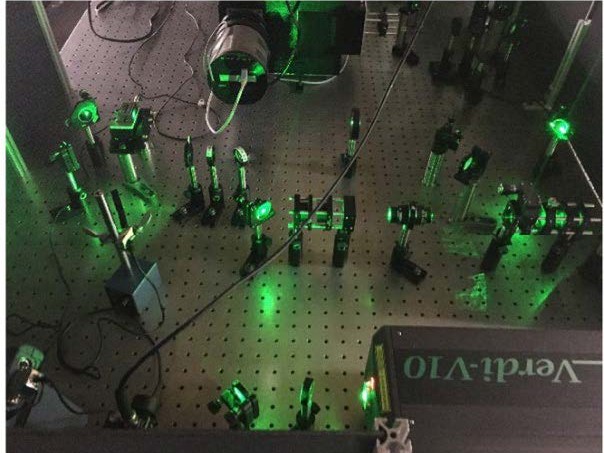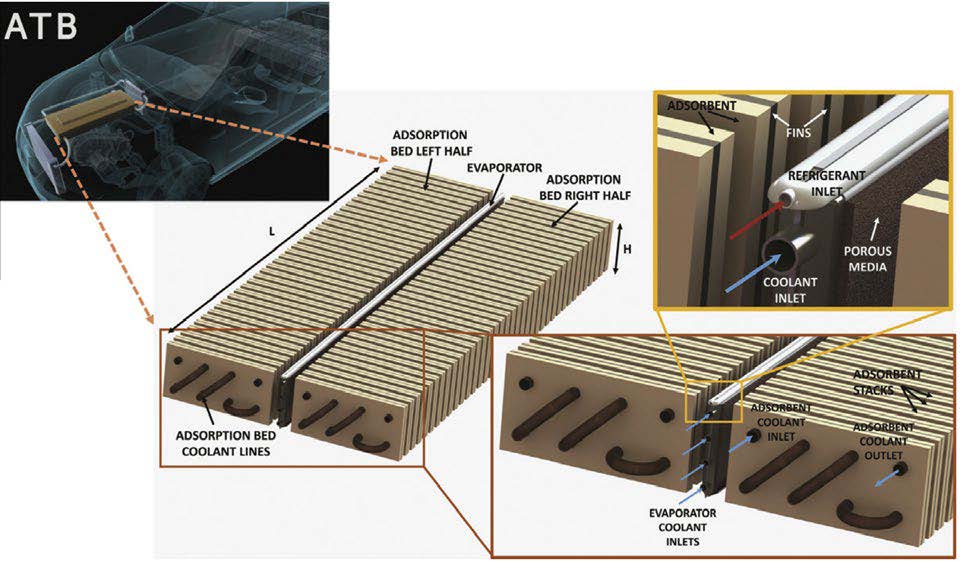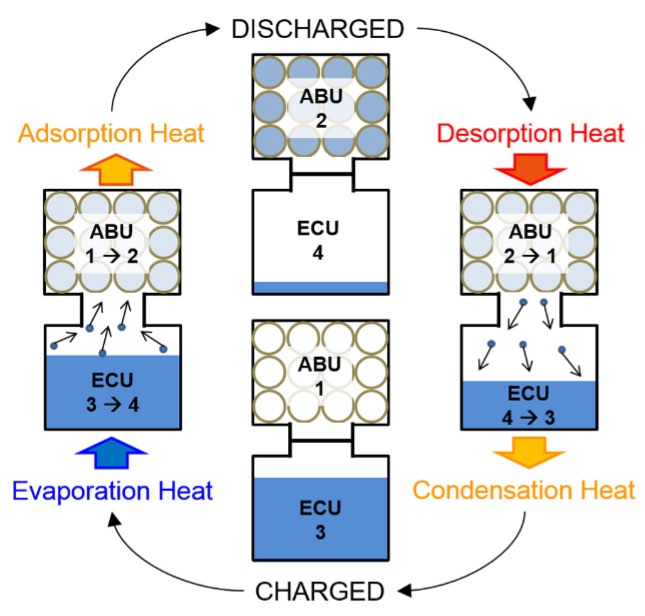Thermal Management
Thermal management, which regulates heat dissipation and temperature rise, is of critical importance at multiple scales. For example, thermal management is essential in advanced microelectronics to mitigate reliability concerns associated with highly localized heat generation and the associated significant temperature rise. Meanwhile, thermal management is needed to enhance the energy efficiency space heating and cooling systems as well as power plants. At the DRL, we are addressing thermal management challenges at multiple scales: 1) We develop advanced thermal characterization techniques based on spectroscopy and atomistic modeling tools to understand thermal transport mechanisms in electronic devices; 2) We design microchannels integrated with nanoengineered materials to enhance two-phase flows; 3) We develop thermal batteries to recycle waste heat for efficient space cooling and heating.
Heat transfer enhancement via nanoengineered surfaces

Micropillar arrays for evaporation and boiling
Nanoporous membrane evaporator
Thermal Characterization Using Raman Spectroscopy

Thermometry of electronic devices
2D material characterization
Thermal transport across interfaces
Adsorption-based Thermal Engineering

Thermophysical battery
Adsorption-based energy storage and cooling
Recent Progress
Thermal Expansion Coefficient of Monolayer Molybdenum Disulfide

Atomically thin two-dimensional (2D) materials have shown great potential for applications in nanoscale electronic and optical devices. A fundamental property of these 2D flakes that needs to be well-characterized is the thermal expansion coefficient (TEC), which is instrumental to the dry transfer process and thermal management of 2D material-based devices. However, most of the current studies of 2D materials’ TEC extensively rely on simulations due to the difficulty of performing experimental measurements on an atomically thin, micron-sized, and optically transparent 2D flake. In this work, we present a three-substrate approach to characterize the TEC of monolayer molybdenum disulfide (MoS2) using micro-Raman spectroscopy. Our work is not only useful for thermal mismatch reduction during material transfer or device operation but also provides a general experimental method that does not rely on simulations to study key properties of 2D materials.
A thermophysical battery for storage-based climate control

Current technologies that provide climate control in the transportation sector are quite inefficient. In gasoline-powered vehicles, the use of air-conditioning is known to result in higher emissions of green-house gases and pollutants apart from decreasing the gas-mileage. On the other hand, for electric vehicles (EVs), a drain in the onboard electric battery due to the operation of heating and cooling system results in a substantial decrease in the driving range. As an alternative to the conventional climate control system, we developed an adsorption-based thermal battery (ATB), which can store thermal energy, and delivering both heating and cooling on demand, while requiring minimal electric power supply. While the use of the ATB in EVs can potentially enhance its driving range, it can also be used for climate control in conventional gasoline vehicles, as well as residential and commercial buildings as a more efficient and environmentally friendly alternative.
Simultaneous measurement of temperature, stress, and electric field

Although micro-Raman spectroscopy has become one of the most popular techniques for measuring localized temperature rise for reliability assessment, decoupling the effects of temperature, mechanical stress, and electric field on the optical phonon frequencies measured by micro-Raman spectroscopy is challenging. In this work, we demonstrate the simultaneous measurement of temperature rise, inverse piezoelectric stress, thermoelastic stress, and vertical electric field via micro-Raman spectroscopy in GaN high-electron-mobility transistors (HEMTs). This implementation of micro-Raman spectroscopy offers an exciting opportunity to simultaneously probe thermal, mechanical, and electrical phenomena in semiconductor devices under bias, providing unique insights into the complex physics that describes device behavior and reliability. This technique is applicable to any solid-state material with a suitable Raman response and will likely enable new measurement capabilities in a wide variety of scientific and engineering applications.
